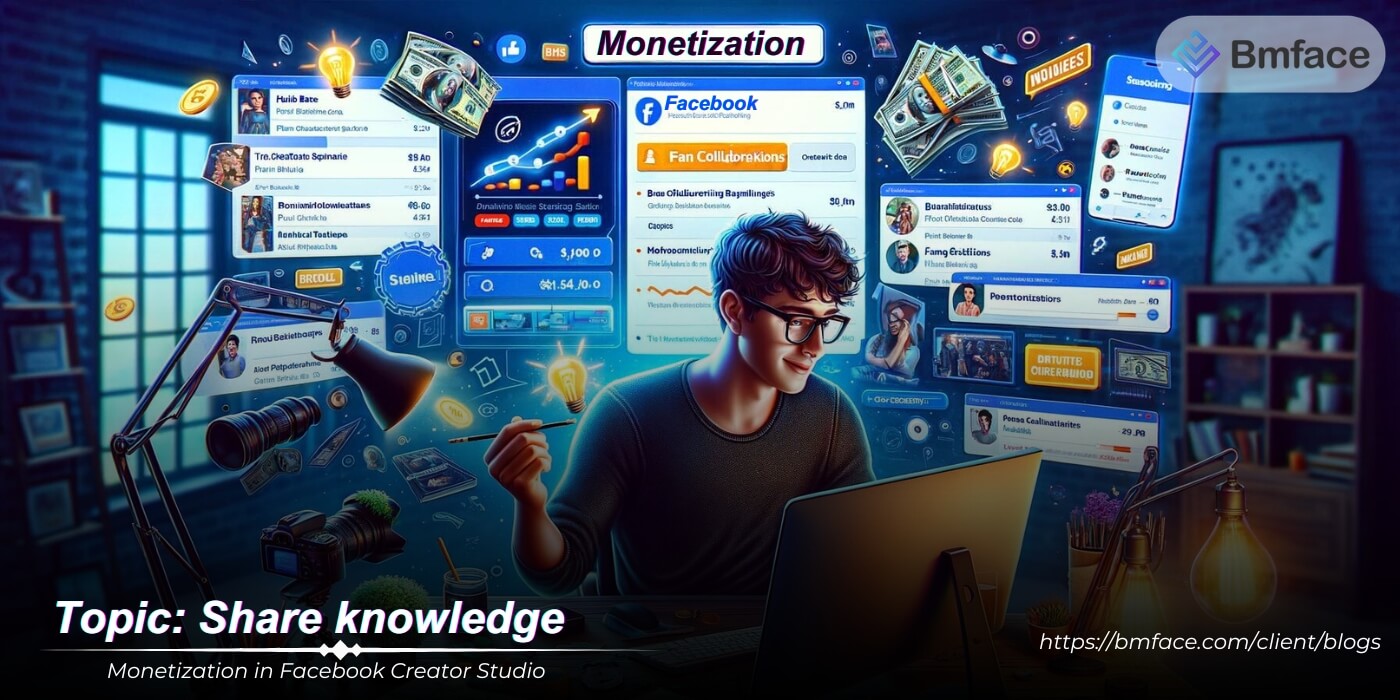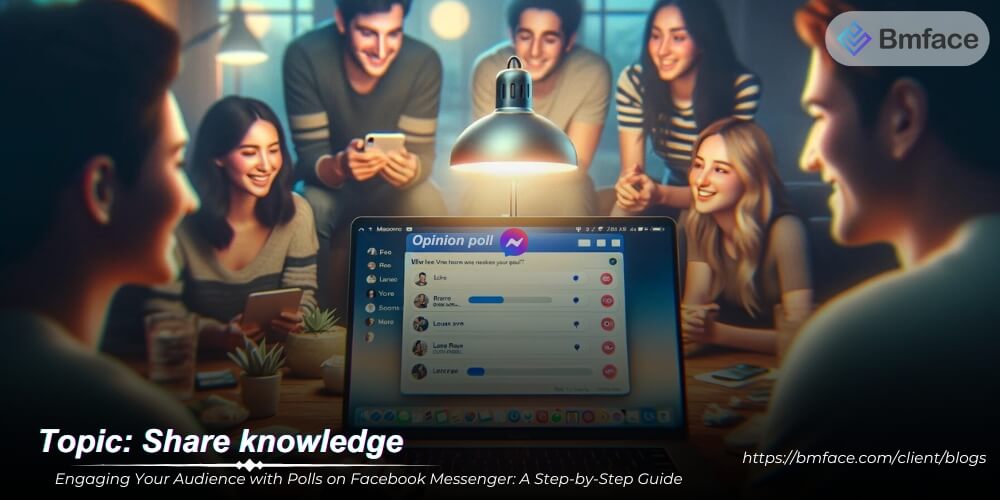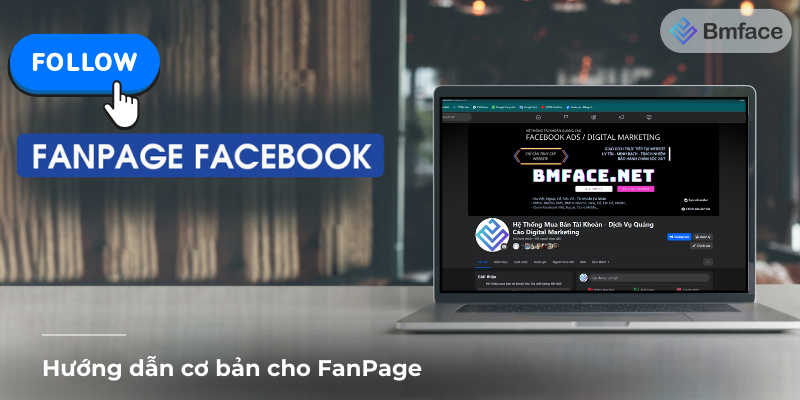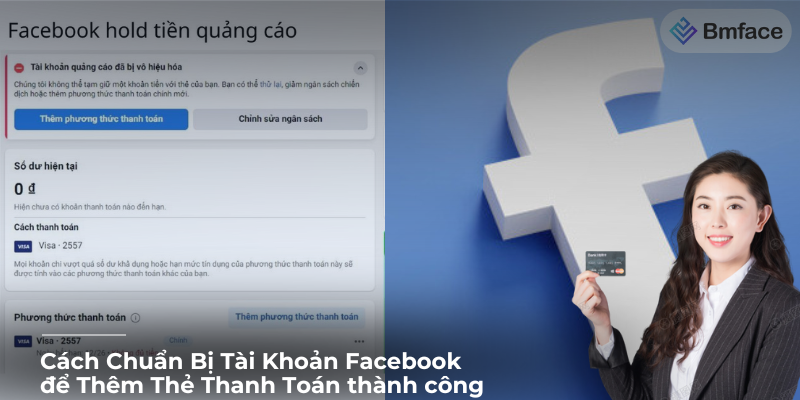The Facebook Ad Library is a powerful resource designed to promote transparency in advertising. It allows people to view all active and inactive ads with a political or social orientation on Facebook platforms, including Instagram. This BMface article dives into how the Ad Library brings transparency to advertising practices and serves as an important tool for competitor research.
Introduction to Facebook Ad Library
The Facebook Ad Library is a valuable tool introduced by Facebook to enhance transparency across its advertising services, including Facebook, Instagram, and Messenger. This public resource is particularly beneficial for users who wish to research and monitor advertising trends and activities without any restrictions. Here’s a detailed introduction to what the Facebook Ad Library is, its key features, and how it serves various stakeholders:
1, Purpose and Functionality
- Transparency: The Facebook Ad Library was created as part of Facebook's efforts to increase openness around political and issue ads following scrutiny over ad transparency. It has since expanded to include all types of ads.
- Accessibility: Anyone can access the library with or without a Facebook account, making it an open resource for researchers, journalists, marketers, and the general public.
2, Features of the Facebook Ad Library
- Search and Browse: Users can search for ads based on various criteria such as keywords, advertisers, or even by specific regions.
- Ad Details: For each ad, the library provides information about the ad’s runtime, performance metrics, budget range, and the demographic details of the audience reached.
- Archive: Political and issue ads are archived for up to seven years, allowing historical analysis and research into advertising trends and tactics over time.
3, Benefits for Various Stakeholders
- Marketers: Gain insights into competitors' advertising strategies and the effectiveness of different ad campaigns.
- Researchers and Journalists: Analyze data for studies or reports on advertising trends, spending patterns, and the impact of ads on public discourse, especially in political contexts.
- General Public: Increase understanding of how advertisers target and reach their audience, particularly with ads that may influence public opinion and behavior.
4, Using the Facebook Ad Library
- Navigating to the Library: You can access the library by visiting Facebook Ad Library.
- Searching for Ads: Enter a keyword, topic, or advertiser name in the search bar to explore active and inactive ads across Facebook’s platforms.
- Analyzing Ad Information: Utilize the detailed metrics provided to understand more about who is funding an ad, how much they are spending, and who the ad is targeting.
The Facebook Ad Library is a significant step toward greater transparency in digital advertising. By making detailed information about all ads publicly accessible, Facebook aims to foster a more informed user base and reduce the misuse of ads, especially those with the potential to influence public opinion. Whether you are a marketer looking to understand industry trends, a researcher focused on digital media influence, or a curious citizen, the Ad Library offers valuable insights into the world of online advertising.
How the Ad Library Promotes Transparency
The Facebook Ad Library is a pivotal tool in promoting transparency in digital advertising. Here’s how it enhances transparency and accountability:
1, Access to Ad Information
- Detailed Ad Insights: The Ad Library provides comprehensive details about each ad, including the campaign spend, the reach, and the demographics of the audience targeted. This level of detail helps users understand not just the content of the ads but also their impact and scope.
- Advertiser Disclosure: Every ad includes information about the organization or individual who paid for it. This helps users identify the sources behind the advertising content they see, which is particularly crucial for political and advocacy ads.
2, Archival of Political and Issue Ads
- Historical Access: By archiving political and issue-related ads for up to seven years, the Ad Library serves as a critical resource for transparency over time. This allows journalists, researchers, and the public to track and analyze trends in political spending and messaging.
- Accountability Over Time: The archival feature holds advertisers accountable for their messages long after a campaign has ended. This historical perspective is vital for assessing the evolution of political campaigns and the strategies employed by various entities.
3, Benefits of Transparency
- Informed Public: With access to real-time data about who is trying to influence their opinions and behaviors, citizens are better equipped to make informed decisions, especially in a political context.
- Fairer Advertising Practices: The visibility of advertising practices encourages fairness and compliance with advertising standards and regulations. Advertisers are more likely to adhere to ethical practices when they know the public can easily access and scrutinize their ads.
- Research and Analysis: Academics, analysts, and political strategists can use the detailed data from the Ad Library to conduct comprehensive studies on the effectiveness of different advertising approaches and the impact of advertising on public opinion.
4, Additional Features Enhancing Transparency
- Search Functionality: Users can search the library by keywords, topics, or advertisers, making it easy to find specific ads or types of content. This functionality is essential for transparency as it allows for targeted inquiries and analysis.
- Global Access: The Ad Library is accessible worldwide, which is crucial for global brands and international political campaigns. This global perspective ensures that transparency is not limited by geographical boundaries.
The Facebook Ad Library represents a significant step forward in digital advertising transparency. By providing detailed, accessible, and long-term data on advertising activities, Facebook is helping to create a more accountable and open advertising environment. This initiative not only helps to mitigate the risks associated with digital advertising, such as misinformation and undue influence but also promotes a healthier public discourse by ensuring that all stakeholders have the tools to understand and analyze the vast amounts of advertising content that they encounter daily.
Using the Ad Library for Competitor Research
The Facebook Ad Library is a robust resource for businesses looking to gain a competitive edge through strategic research and analysis. Here’s how businesses can effectively use the Ad Library for competitor research:
1, Analyzing Competitor Strategies
- Messaging and Content Analysis: By examining the types of messages and content competitors are using, businesses can identify what resonates with their target audience. This includes analyzing the tone, style, and visual elements of competitors’ ads.
- Targeting Insights: The Ad Library provides information about the demographics targeted by competitors' ads. Businesses can use this data to understand who their competitors are focusing on and adjust their own targeting strategies accordingly.
- Budget Insights: Although exact spending figures are not disclosed, the Ad Library gives a range of spending for each ad. This information can help businesses gauge how much competitors are investing in certain campaigns and how aggressive their ad strategies are.
2, Benchmarking Performance
- Comparative Analysis: Businesses can compare their ads’ reach and engagement against those of their competitors. This involves looking at similar ads run by different companies to see which are performing better in terms of audience engagement and reach.
- Effectiveness of Ad Formats: Companies can analyze which ad formats (e.g., video, image, carousel) are most commonly used by competitors and which seem to be the most effective, helping them to optimize their own creative strategies.
3, Implementing Findings into Marketing Strategies
- Adapt and Optimize Campaigns: Based on insights gained from competitor analysis, businesses can adapt their marketing strategies to better meet the needs and preferences of their target audience. This could involve refining ad copy, visuals, or calls to action.
- Innovate Based on Gaps: If competitor analysis reveals a gap in the market—perhaps a target demographic that is under-served or a messaging strategy that is underutilized—businesses can capitalize on these opportunities to differentiate themselves.
- Strategic Planning: Long-term ad planning can be improved by understanding the seasonal trends, campaign timing, and ad frequency of competitors. This strategic insight ensures optimal timing and budget allocation for future campaigns.
4, Tools and Techniques for Enhanced Analysis
- Cross-Platform Analysis: Since the Ad Library includes information from Facebook, Instagram, and other platforms in the Facebook network, businesses should take a holistic approach to analyze campaigns across all these platforms to get a comprehensive view.
- Utilize Analytics Tools: Complement the insights gained from the Ad Library with advanced analytics tools to dive deeper into data analysis and performance metrics.
The Facebook Ad Library is an invaluable tool for businesses looking to refine their competitive strategies and enhance their market understanding. By systematically analyzing competitors’ advertising efforts and outcomes, companies can uncover valuable trends and patterns that inform smarter, more effective ad strategies. This level of analysis not only helps businesses keep up with the competition but also encourages innovation and adaptation in the fast-evolving digital marketing landscape.
Tools and Features of the Ad Library
The Facebook Ad Library is equipped with a variety of tools and features designed to provide transparency and deep insights into the advertising landscape on the platform. Here’s a closer look at these functionalities and how they can be utilized for detailed advertising research and analysis:
1, Search and Filter Functions
- Advanced Search Capabilities: The Ad Library allows users to perform detailed searches using specific parameters like advertiser name, campaign keywords, or geographic regions. This capability is crucial for anyone looking to conduct targeted research on specific entities or campaign strategies.
- Filtering Options: Users can refine their searches by applying filters such as date ranges, campaign types, and demographics. This helps in isolating specific campaigns during particular periods or targeting specific audience segments, making the data more relevant to the user’s research needs.
2, Viewing Engagement Metrics
- Engagement Analytics: The library provides detailed metrics on how users interact with ads, including the number of views, clicks, and shares an ad received. This data is invaluable for assessing the effectiveness and reach of different ad campaigns.
- Performance Overviews: Users can see performance data over the campaign's life, giving insights into its longevity and audience retention. This can inform decisions on campaign duration and content fatigue.
3, Archival Access
- Historical Data: Political and issue-related ads are stored for up to seven years, providing a rich historical dataset for analysis. This feature is particularly useful for researchers studying political campaigns and social issues over time.
- Access to Inactive Ads: The library includes both active and inactive ads, allowing users to study campaigns that have concluded, which is helpful for understanding the full lifecycle of marketing strategies.
4, Transparency Features
- Ad Spend and Reach: Information about how much was spent on the ad and the reach (including geographical breakdown) offers transparency about the investment behind the campaign and its potential impact.
- Advertiser Verification: The library shows whether advertisers have completed Facebook’s verification process, adding an extra layer of trust and legitimacy to the information provided.
5, Integration with Other Tools
- Linkage with Facebook Insights: For advertisers, integrating data from the Ad Library with Facebook Insights can provide a comprehensive view of how their own ads perform in comparison to the broader market.
- API Access: For developers and larger organizations, Facebook offers API access to the Ad Library, enabling the integration of ad data into custom analytics tools and dashboards for more sophisticated analysis.
The tools and features of the Facebook Ad Library make it an essential resource for marketers, researchers, political analysts, and the general public interested in the transparency and effectiveness of advertising on social media. By leveraging detailed search functions, extensive filtering options, and comprehensive engagement metrics, users can gain a deep understanding of advertising trends, strategies, and outcomes on Facebook. This knowledge is not only critical for optimizing future campaigns but also for fostering a more transparent and informed advertising environment.
Challenges and Considerations
The Facebook Ad Library, while being a powerful tool for transparency and research, does present several challenges and considerations that users need to navigate effectively:
1, Challenges in Data Interpretation
- Contextual Understanding: The data provided by the Ad Library is raw and often lacks the contextual nuances necessary to fully understand the effectiveness and intent of the ads. Users must consider external factors such as market conditions, concurrent events, and seasonal impacts when analyzing ad performance.
- Comparative Analysis Limitations: Without a detailed understanding of competitors' overall marketing strategies, users may find it difficult to accurately assess why certain ads performed the way they did based solely on library data.
2, Data Overload
- Managing Large Datasets: The sheer volume of data can be daunting. Users need to develop robust methods to sift through, categorize, and analyze data to avoid missing critical insights amidst the noise.
- Data Relevance: Given the vast array of ads included in the library, identifying which ads are relevant to specific research needs can be challenging. Users must be adept at quickly determining the significance of data to their particular inquiries.
3, Ethical and Privacy Considerations
- Data Privacy: While the Ad Library aims to increase transparency, it must balance this goal with the privacy of individuals involved in the ads, especially in sensitive categories like politics or health.
- Misuse Risks: There is also the potential for misuse of the data, as it could be exploited to undermine competitors unfairly or to mislead regulatory bodies or the public about advertising practices.
4, Technical and Usability Issues
- User Interface and Experience: Navigating the Ad Library interface may not always be intuitive, especially for those unfamiliar with digital marketing tools, which can hinder the accessibility of the information.
- Continuous Updates: The library is continuously updated; keeping up with the changes requires regular engagement with the platform, which can be resource-intensive.
Conclusion
Despite these challenges, the Facebook Ad Library remains a vital resource for anyone involved in digital advertising, offering unprecedented transparency that can help shape better marketing practices and foster a healthier digital advertising environment. By understanding both the capabilities and limitations of the Ad Library, users can better leverage this tool to enhance their advertising strategies, conduct thorough competitor analysis, and contribute to a more transparent online advertising landscape. As the digital realm evolves, so too will the tools that support transparency and accountability, making ongoing engagement and adaptation essential for all stakeholders in the digital advertising ecosystem.
For more insights and updates on effective social media strategies, make sure to follow Bmface and our tutorial blog, where we share the latest and most effective content marketing tips.
Cảm ơn bạn đã theo dõi bài viết. Mua hàng tại Bmface.com để ủng hộ đội ngũ Admin viết thêm nhiều bài viết hay. Xin cảm ơn!































